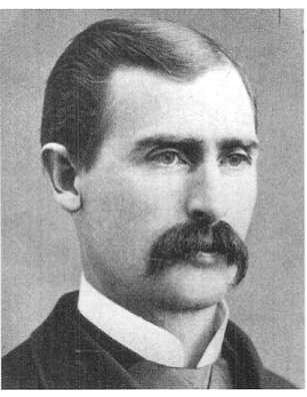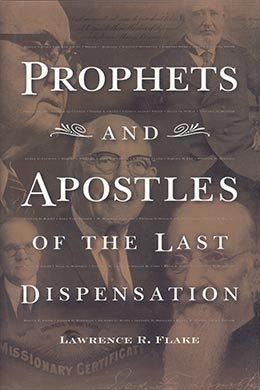Moses Thatcher
Lawrence R. Flake, Prophets and Apostles of the Last Dispensation (Provo, UT: Religious Studies Center, Brigham Young University, 2001), 399–401.

Born: 2 February 1842, Springfield, Illinois
Quorum of the Twelve Apostles: 9 April 1879 (age 37)
Released from the Quorum: 6 April 1896
Died: 21 August 1909 (age 67), Logan, Utah
Although he was only four years old when the members of the Church were driven from Nauvoo, the memory of the fear and terror of that exodus remained with Moses Thatcher throughout his life. The rigor of crossing the plains in the second pioneer company and of being “hungry for an entire year” after reaching the Salt Lake Valley likewise impressed the growing boy. His father’s family, with many others, augmented their meager food supply with sego roots and “cut thistles.” At the age of seven, Moses was given the responsibility of caring for grazing sheep. He recalled how hungry Indians would catch a lamb and hold it hostage until the young shepherd would agree to trade his cornbread lunch for their cake made from crickets.
In 1849 the Thatcher family, consisting of eight sons and a daughter, moved to the gold fields of California. Here Moses, the sixth of the sons, tended stock and acquired some skill at gold mining with a kitchen pan. When missionaries from Salt Lake City came in 1856, he (at the age of fifteen) and several of his brothers who had also passed the age of eight were baptized. Three months later Moses was ordained an elder, and the following month he was called as a missionary to labor with the elders in the area.
Deprived of schooling and lacking confidence, Elder Thatcher found himself totally unable to speak or pray before a group. After several failures, his senior companion agreed not to call on him anymore. One day the timid missionary attended a Methodist service alone. The pastor devoted the sermon to attacking the characters of Joseph Smith, Brigham Young, and the Mormon people. Filled with righteous wrath, Elder Thatcher obtained permission to reply. With the Spirit of the Lord resting on him, he delivered an eloquent and powerful defense of his Prophet and people and a scathing rebuke of the minister. From that day forward his tongue was loosed and he eventually became one of the most effective orators in the Church.
In 1857 the Thatchers, along with other Saints in the outlying areas, were called back to Utah to brace for the coming of the United States Army. Moses devoted his time in the Salt Lake Valley to attending school during the day and serving on the police force that guarded the city at night. In 1861 he married Lettie Farr, the first of his three wives, and moved to Logan. The next half century of Moses’ life was devoted to Church and public service and to an extensive business career, involving merchandising, banking, and railroads.
Although he served several missions in the United States and one in Europe, Elder Thatcher’s major Church service involved the country of Mexico. During the seventeen years following 1879 when he opened the Mexican Mission, Elder Thatcher, then a member of the Quorum of the Twelve, made twenty-three journeys to that land, traveling over a quarter of a million miles on behalf of the Church. In 1886 he helped negotiate the purchase of the seventy-five-thousand-acre “Corrales Basin,” where he dedicated the townsite of Juarez.
His civic service in Utah included a decade in the territorial legislature, several missions to Washington, D. C. to lobby for plural marriage and statehood, and membership in the convention that drafted the constitution under which Utah was admitted to the Union in 1896. Moses Thatcher became a candidate in Utah’s first senatorial race but was defeated. Due to the political involvements of Elder Thatcher and other general authorities, the First Presidency presented the so-called “Political Manifesto” in the April 1896 general conference. Basically it was a request that the approval of Church leadership be obtained before a general authority accepted positions “political or otherwise, which would interfere with the proper and complete discharge of his ecclesiastical duties.” [1] All of the general authorities signed this statement except Anthon H. Lund, who was away on a mission in Europe, and Moses Thatcher, who refused to sign, being opposed to the measure. As a result of this disagreement, he was dropped from the Quorum of the Twelve in 1896 but continued as an active member of the Church until his death in 1909. [2]
Notes
[1] B. H. Roberts, Comprehensive History of The Church of Jesus Christ of Latter-day Saints (Provo, UT: Brigham Young University Press, 1965), 6:334.
[2] Andrew Jenson, Latter-day Saint Biographical Encyclopedia (Salt Lake City: Andrew Jenson History, 1901), 1:127–36.
